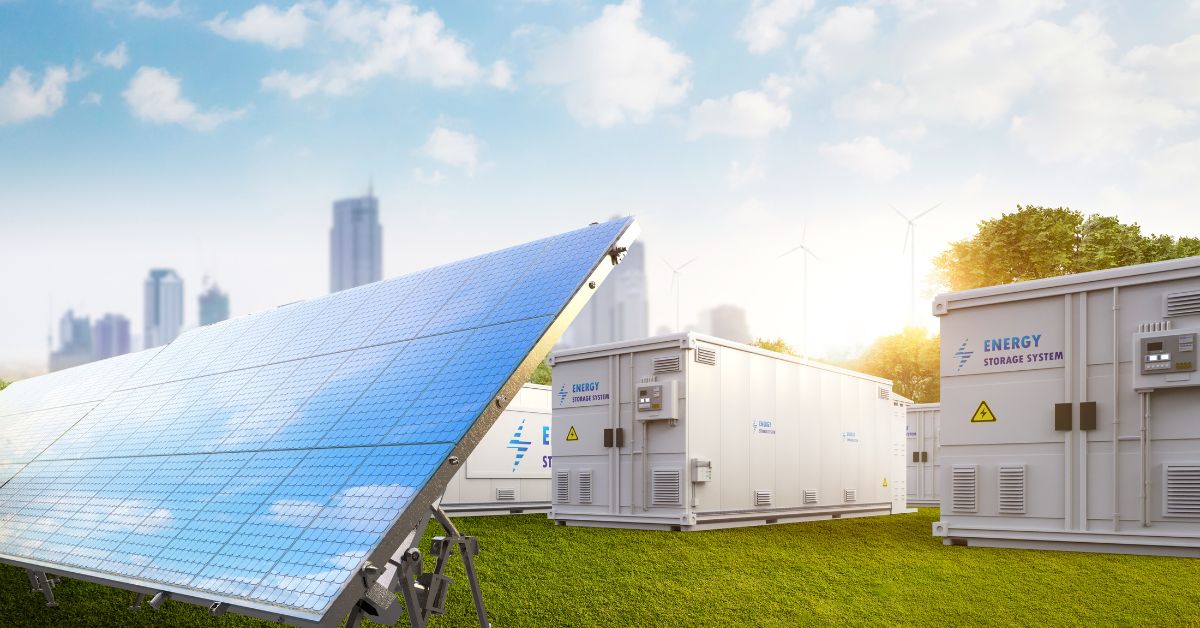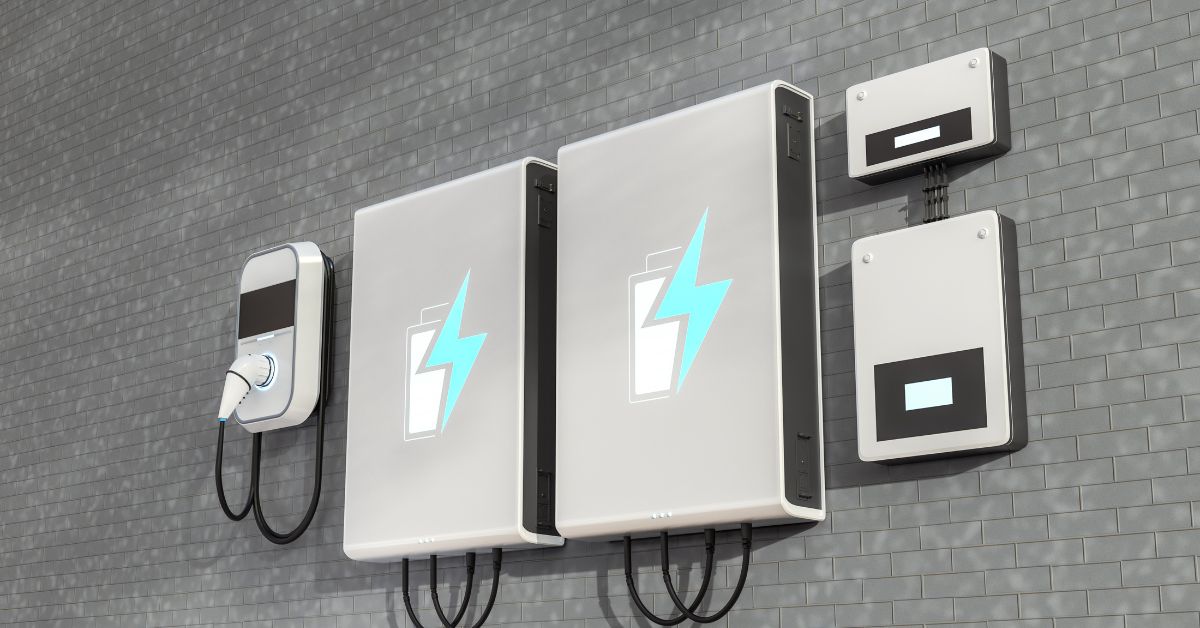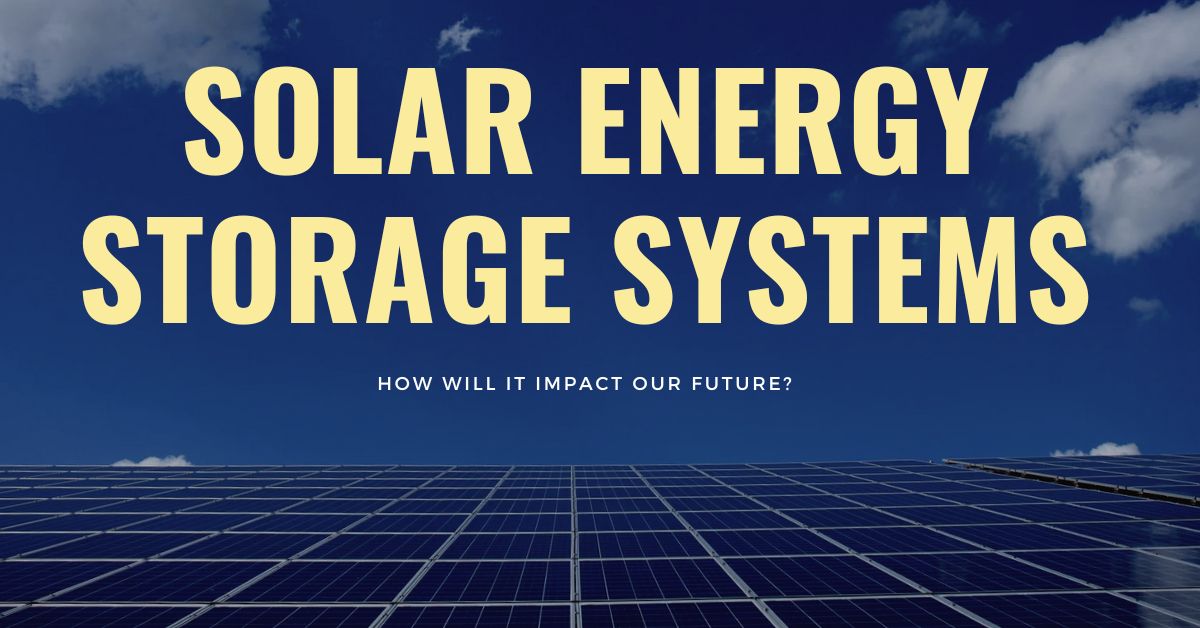Solar Energy Storage Systems
Solar energy storage systems capture and store excess energy generated by solar panels during the day, allowing it to be used later, particularly during nighttime or cloudy periods. These systems typically utilize batteries to store energy, enhancing grid independence, promoting sustainability, and ensuring a reliable, renewable energy supply for homes and businesses.
Solar Energy Storage Systems: Revolutionizing Renewable Energy
Table of Contents
- Introduction to Solar Energy Storage Systems
- What is Solar Energy Storage?
- The Importance of Energy Storage in Solar Power
- History of Solar Energy Storage
- Types of Solar Energy Storage Systems
- Battery Storage Systems
- Thermal Energy Storage Systems
- Mechanical Energy Storage Systems
- Chemical Energy Storage Systems
- Battery Storage for Solar Power
- Lithium-Ion Batteries
- Lead-Acid Batteries
- Flow Batteries
- Innovations in Battery Storage
- Thermal Energy Storage in Solar Power
- How Thermal Energy Storage Works
- Types of Thermal Storage: Sensible, Latent, and Thermochemical
- Applications in Solar Thermal Power Plants
- Mechanical and Chemical Energy Storage
- Pumped Hydro Storage
- Compressed Air Energy Storage (CAES)
- Hydrogen Storage and Fuel Cells
- Advantages and Challenges of Solar Energy Storage
- Advantages of Solar Energy Storage Systems
- Challenges and Barriers to Adoption
- Solar Energy Storage in Residential, Commercial, and Industrial Sectors
- Residential Solar Energy Storage
- Commercial and Industrial Applications
- Role in Grid Stability and Load Balancing
- Financial and Environmental Benefits of Solar Energy Storage Systems
- Economic Savings
- Incentives and Government Policies
- Environmental Impact and Sustainability
- Future Trends in Solar Energy Storage
- Advances in Battery Technology
- Integration with Smart Grids and AI
- Large-Scale Energy Storage Projects
- FAQs about Solar Energy Storage Systems
- Conclusion
- The Future of Solar Energy Storage
- Importance in Achieving Global Energy Goals
Solar Energy Storage Systems
Introduction to Solar Energy Storage Systems
What is Solar Energy Storage?
Solar energy storage systems are technologies designed to capture and store the electrical energy generated by solar power for later use. These systems help manage the intermittency of solar power production by storing excess energy when the sun is shining and supplying it when demand is high or during non-sunny periods. Energy storage is a crucial component of renewable energy infrastructure, providing reliability and flexibility in the use of solar energy.
The Importance of Energy Storage in Solar Power
Solar energy is abundant and clean, but its biggest challenge is that it’s not continuously available—solar panels generate electricity only when the sun is shining. Energy storage systems address this limitation by ensuring a continuous energy supply. These systems can store energy during the day when solar power generation is at its peak and release it at night or during cloudy weather, thus making solar power a more viable alternative to traditional energy sources.
History of Solar Energy Storage
Early forms of energy storage, such as thermal and mechanical systems, have been used for centuries. However, the development of electrical energy storage systems specifically for solar power began in the late 20th century. The introduction of modern batteries, including lithium-ion and flow batteries, has significantly advanced solar energy storage capabilities, making it more practical and affordable for both large-scale and residential applications.
Types of Solar Energy Storage Systems

Battery Storage Systems
Battery storage is the most common method of solar energy storage. Batteries store energy in electrochemical form and release it as electricity when needed. Lithium-ion batteries, known for their high efficiency and energy density, are currently the most widely used in solar energy systems. Other types of batteries, such as lead-acid and flow batteries, are also utilized depending on the specific needs of the application.
Thermal Energy Storage Systems
Thermal energy storage (TES) involves capturing heat from the sun and storing it for later use. This is particularly useful in solar thermal power plants, where the heat can be used to produce electricity even after the sun has set. TES can store energy in various forms, such as molten salts or other high-heat capacity materials.
Mechanical Energy Storage Systems
Mechanical storage systems include technologies like pumped hydro storage and compressed air energy storage (CAES). These systems store energy in the form of potential or kinetic energy. For example, pumped hydro storage uses excess electricity to pump water to a higher elevation, and when electricity is needed, the water is released to generate power.
Chemical Energy Storage Systems
Chemical energy storage, such as hydrogen storage, involves converting solar energy into chemical compounds like hydrogen through electrolysis. This stored chemical energy can later be converted back into electricity using fuel cells, making it a versatile form of energy storage.
Battery Storage for Solar Power
Lithium-Ion Batteries
Lithium-ion (Li-ion) batteries are the most popular choice for solar energy storage due to their high energy density, long lifespan, and efficiency. They are widely used in residential and commercial solar systems, and ongoing research aims to improve their capacity and reduce costs. Li-ion batteries can store large amounts of energy in relatively small spaces, making them ideal for decentralized solar power systems.
Lead-Acid Batteries
Lead-acid batteries are one of the oldest types of rechargeable batteries and are still used in off-grid solar installations. Though they are less efficient and have a shorter lifespan compared to Li-ion batteries, they are much cheaper. Lead-acid batteries are often used in applications where cost is a primary concern, and space is less of an issue.
Flow Batteries
Flow batteries store energy in liquid electrolytes that flow through the battery’s cells. Unlike conventional batteries, flow batteries offer virtually unlimited energy storage capacity and can be scaled up easily for large installations. This makes them particularly attractive for utility-scale solar projects, though they are less common in residential applications due to their size and complexity.
Innovations in Battery Storage
The field of battery storage is rapidly evolving, with innovations such as solid-state batteries and advanced lithium-sulfur batteries promising higher energy densities, faster charging times, and improved safety. These advancements could dramatically reduce the cost of solar energy storage, making it more accessible to a wider audience.
Thermal Energy Storage in Solar Power
How Thermal Energy Storage Works
Thermal energy storage (TES) systems capture and store heat generated from the sun. This heat can be used directly for industrial processes or converted into electricity when needed. TES is particularly useful in concentrated solar power (CSP) plants, where mirrors focus sunlight onto a receiver to generate heat, which is then stored and converted into electricity.
Types of Thermal Storage: Sensible, Latent, and Thermochemical
- Sensible heat storage: This method stores heat by raising the temperature of a material, such as water or molten salt. The energy is recovered by using the stored heat to generate steam or warm air.
- Latent heat storage: Involves storing energy during a phase change, such as from liquid to solid, in materials like phase change materials (PCMs). Latent heat storage has a higher energy density than sensible storage.
- Thermochemical storage: Stores energy in chemical bonds and releases it through a chemical reaction. It is highly efficient and can store energy for long periods without significant losses.
Applications in Solar Thermal Power Plants
Thermal storage is integral to the operation of solar thermal power plants, especially in regions with high solar irradiance. These systems allow power generation to continue even after sunset, offering a reliable and continuous power supply.
Mechanical and Chemical Energy Storage
Pumped Hydro Storage
Pumped hydro storage is the oldest and most widely used form of large-scale energy storage. It involves pumping water from a lower reservoir to an upper reservoir during periods of excess electricity production. When energy is needed, the water is released back down through turbines to generate electricity.

Compressed Air Energy Storage (CAES)
CAES systems use excess electricity to compress air and store it in underground caverns or tanks. When electricity demand increases, the compressed air is released to power turbines. CAES systems are highly efficient and can store large amounts of energy for long periods.
Hydrogen Storage and Fuel Cells
Hydrogen storage involves using solar energy to power electrolysis, which splits water into hydrogen and oxygen. The hydrogen can be stored and later converted back into electricity using fuel cells. This method offers long-term energy storage with minimal environmental impact, as the only by-product of the fuel cell process is water.
Advantages and Challenges of Solar Energy Storage
Advantages of Solar Energy Storage Systems
- Energy Independence: Solar storage systems allow homes and businesses to become less reliant on the grid, offering energy independence.
- Grid Stability: Stored solar energy can be used during peak demand, reducing the strain on the grid and helping to prevent blackouts.
- Sustainability: Solar energy storage contributes to reducing greenhouse gas emissions by maximizing the use of clean, renewable energy.
Challenges and Barriers to Adoption
- Cost: The initial investment in solar energy storage systems, particularly for high-capacity batteries, remains high, although costs are decreasing.
- Lifespan and Degradation: Some storage technologies, especially batteries, degrade over time, reducing their efficiency and capacity.
- Regulatory Barriers: In some regions, regulatory hurdles and the lack of incentives hinder the widespread adoption of solar energy storage.
Solar Energy Storage in Residential, Commercial, and Industrial Sectors
Residential Solar Energy Storage
In residential settings, energy storage systems, such as home batteries, are becoming increasingly popular. These systems allow homeowners to store excess energy generated by their solar panels and use it during peak demand periods or power outages, reducing their electricity bills and reliance on the grid.
Commercial and Industrial Applications
For commercial and industrial sectors, solar energy storage can reduce operational costs and provide a reliable energy supply. Large-scale battery storage systems can be integrated into industrial facilities, allowing companies to offset peak energy costs and enhance resilience against power disruptions.
Role in Grid Stability and Load Balancing
Energy storage systems play a critical role in maintaining grid stability by balancing supply and demand. By storing excess solar power and releasing it during peak demand, these systems help reduce the need for fossil fuel-based peaking plants, making the grid more sustainable.
Financial and Environmental Benefits of Solar Energy Storage Systems
Economic Savings
By storing solar energy and using it when electricity rates are high, both residential and commercial users can reduce their energy bills. Additionally, businesses can benefit from lower demand charges, which are fees based on the highest amount of power used during peak periods.
Incentives and Government Policies
Many governments offer financial incentives, such as tax credits, rebates, and grants, to encourage the adoption of solar energy storage systems. Policies aimed at promoting renewable energy development are also driving investment in storage technologies.
Environmental Impact and Sustainability
Solar energy storage systems help reduce the reliance on fossil fuels, thereby lowering carbon emissions. Moreover, they enable the efficient use of solar power, which is a clean and renewable energy source, contributing to the reduction of pollution and the overall environmental footprint.
Future Trends in Solar Energy Storage
Advances in Battery Technology
Research and development in battery technologies, such as solid-state and next-generation lithium-sulfur batteries, promise to improve energy density, safety, and cost efficiency. These advancements are expected to further boost the adoption of solar energy storage systems.

Integration with Smart Grids and AI
The integration of solar energy storage with smart grids and AI technologies is another emerging trend. AI can optimize energy storage systems by predicting energy production and consumption patterns, leading to more efficient energy use and lower costs.
Large-Scale Energy Storage Projects
Around the world, large-scale energy storage projects are being deployed to provide grid-scale energy storage, ensuring the stability of power supply in regions with significant solar energy generation. These projects are essential for achieving a sustainable and reliable energy future.
FAQs about Solar Energy Storage Systems
1. What exactly is a solar energy storage system?
A solar energy storage system stores excess electricity generated by solar panels during the day for use when sunlight is unavailable, such as during nighttime or cloudy periods. These systems often use batteries to retain the energy.
2. What types of batteries are used for solar energy storage?
The most common batteries used in solar storage are lithium-ion, lead-acid, and flow batteries. Each type has different advantages in terms of cost, lifespan, and efficiency.
3. Can a solar storage system provide power during a blackout?
Yes, but only if it is designed to do so. Some systems can automatically switch to battery power during a grid outage, providing energy for essential appliances or the entire home, depending on the system size.
4. How much energy can a solar battery store?
The amount of energy a battery can store depends on its capacity, typically measured in kilowatt-hours (kWh). Residential solar batteries usually range from 5 kWh to 20 kWh, with larger systems for commercial use.
5. Is it possible to add a battery to an existing solar panel system?
Yes, many solar energy storage systems are designed to be retrofitted into existing solar panel setups. However, compatibility depends on the inverter and the system’s configuration.
6. How long do solar storage batteries last?
On average, solar batteries last between 5 and 15 years, depending on the battery type and usage. Lithium-ion batteries generally have longer lifespans and warranties compared to lead-acid batteries.
7. Are solar energy storage systems cost-effective?
The cost-effectiveness of a solar storage system depends on factors like local energy rates, available incentives, system cost, and usage patterns. It can lower electric bills by shifting energy use to times when electricity rates are higher.
8. How does solar storage impact my energy independence?
Solar storage allows you to store your energy, reducing reliance on the grid and increasing energy independence. It can also protect against rising energy costs and improve energy security.
9. What is the difference between AC-coupled and DC-coupled solar battery systems?
AC-coupled systems store energy in batteries as AC (alternating current), while DC-coupled systems store energy as DC (direct current). DC-coupled systems tend to be more efficient since solar panels produce DC, but AC-coupled systems offer flexibility when retrofitting existing installations.
10. Do solar batteries require maintenance?
Solar batteries generally require minimal maintenance, especially lithium-ion models. However, it’s important to monitor the system’s performance and ensure that it is not exposed to extreme temperatures, which can shorten battery life.
11. What is the lifespan of a solar energy storage system?
A solar energy storage system can last 10 to 20 years depending on the battery type, inverter, and usage patterns. Proper maintenance and environmental conditions can help extend its life.
12. Can solar energy storage systems be scaled up over time?
Yes, many systems are modular and can be expanded by adding more batteries as energy needs grow, providing flexibility for future upgrades.
13. How do time-of-use (TOU) rates affect solar battery storage savings?
TOU rates charge more for electricity during peak hours. Solar energy storage allows you to avoid high rates by using stored energy during peak times and saving money on your utility bill.
14. How does solar energy storage affect my home’s resale value?
A solar energy storage system can increase your home’s resale value by offering potential buyers energy independence and lower utility bills, especially in regions where energy costs are high.
15. What incentives or rebates are available for solar energy storage systems?
Many areas offer financial incentives such as federal tax credits, state rebates, and utility-based incentives to reduce the cost of solar storage systems. It’s important to check local programs.
Conclusion
The Future of Solar Energy Storage
Solar energy storage is poised to become an integral part of the global energy landscape. As technologies continue to evolve and costs decline, the adoption of solar storage systems is expected to accelerate, playing a key role in the transition to a cleaner and more sustainable energy future.
Importance in Achieving Global Energy Goals
Energy storage is crucial in achieving the global goals of reducing carbon emissions and increasing the share of renewable energy in the energy mix. By enabling the efficient use of solar power, storage systems contribute to a future where clean energy is available to all.
This comprehensive guide has explored the different types of solar energy storage systems, their benefits, and their potential challenges. As the world shifts toward renewable energy, the role of storage in maximizing the potential of solar power will only become more significant, offering a sustainable solution to the world’s energy needs.

